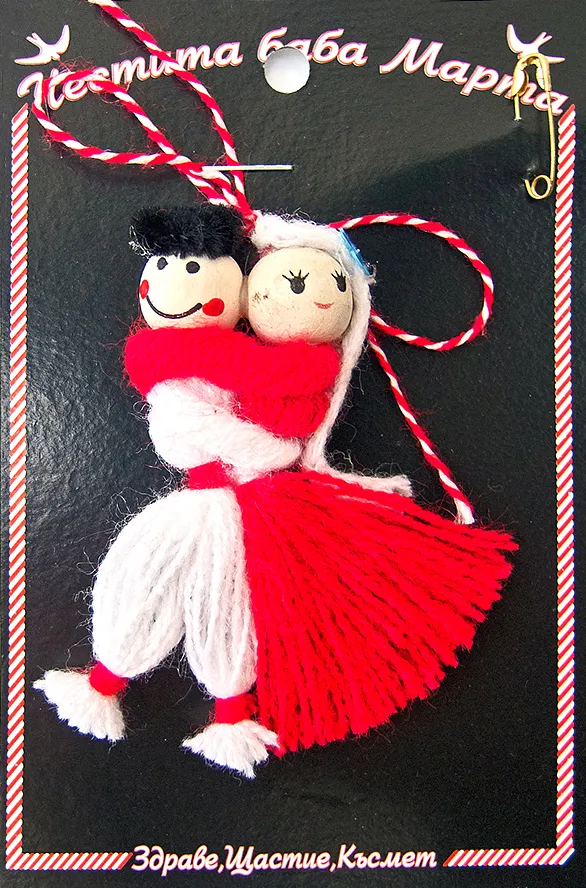Legend of the martenitsa – 1
One of the legends about the origin of the martenitsa is related to Khan Asparuh and the creation of the Bulgarian state beyond the Danube. According to legends, when the Bulgarians reached the Danube plain, fascinated by the place, they decided to settle right here. The chief announced the newly created state and, as is his turn, decided to make a sacrifice to the god Tangra. According to tradition, the pyre should have been lit with a sprig of dried fennel, but the people could not find any. As they bustled about, a falcon perched on the ruler's shoulder. At his foot hung a bundle of fennel, tied with a white thread dyed red. The falcon was sent by Huba, Asparukh's sister, who remained in the domain of their father Kubrat. She had a prophetic dream in which she saw that Asparuh had a problem and sent him the much-needed sprig of fennel by falcon. The flight was long, the bird got tired and hurt its wing on the bundle, Blood stained the white thread in several places and it turned white-red. Asparuh lit the fire as per tradition, and tied the thread for health and luck. This happened when the ice floes on the river started and the Danube became navigable. Since then, on March 1st, when the ice begins to melt and nature is reborn, the Bulgarians dress up with twisted white and red thread.
Legend of the martenitsa – 2
Before coming to the Danube lands, the Bulgarians lived far to the northeast. Their leader Kubrat fell ill and when he felt that his end was approaching, he called his five sons to his bedside. He commanded them to be always together and never separate, so that the enemies could not subdue them. The chief died, and the Khazar tribe attacked the Bulgarians and captured Kubrat's daughter - Khuba. Their ruler Ashina would release the Bulgarian woman if her brothers were willing to obey him and recognize him as their ruler. Kubrat's sons had to make a difficult decision.
The brothers agreed secretly. Bayan, the eldest, who by right should have been ruler, decided to stay and defend his native land to the last. After many unequal battles, he submitted to the Khazars and remained a prisoner with his sister. But even though they did not fulfill their father's promise, the other brothers had the lead and set off with their tribes to look for new lands where they could live freely. Kotrag went north and soon founded Volga Bulgaria. Asparukh, Kuber and Alcek headed south. Kuber reached the lands of today's Macedonia and founded his state there. Altzek reached the lands of today's southern Italy and there is still a monument to him, and many towns bear Bulgaria in their name. Asparuh reached the banks of the Danube and a fertile and colorful land appeared before him - flat fields alternated with lush meadows and dense forests. He decided that this would be the new homeland of his Bulgarians and decided to send news to his brother and sister. This would be a sign for them to escape captivity and come to him. On the leg of a dove he tied a golden thread. Khuba soon got the news and together with Bayan ran away. But when they reached the Danube, they didn't know what to do. They realized that only the bird could help them. Bayan tied a white thread to the leg of the pigeon and let it fly. Unfortunately, as they fled, they were followed by pursuers who, as soon as they saw them, started shooting at them. It all happened very quickly. An arrow hit Bayan and some of his blood stained the end of the white thread. But fortunately, Asparuh saw his brother and sister from the other side. When the Huns saw his soldiers, they left the fugitives and fled.
When Huba and Bayan crossed to the other shore, Asparukh took the red end of the thread and tied it with the white one. He pinned one of his warriors and commanded that the red and white thread should never be torn, because this thread will always connect Bulgarians around the world, wherever they are. Since then, the Bulgarians began to show off with a thread twisted in white and red, and they named the talisman Martenitsa - after the month in which all this happened.
© 2023 Iliana Dechkova

